Makoto Iida
Finding a Needle in a Haystack: Tiny Flying Object Detection in 4K Videos using a Joint Detection-and-Tracking Approach
May 18, 2021
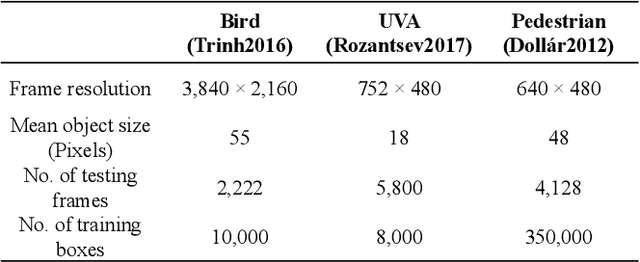
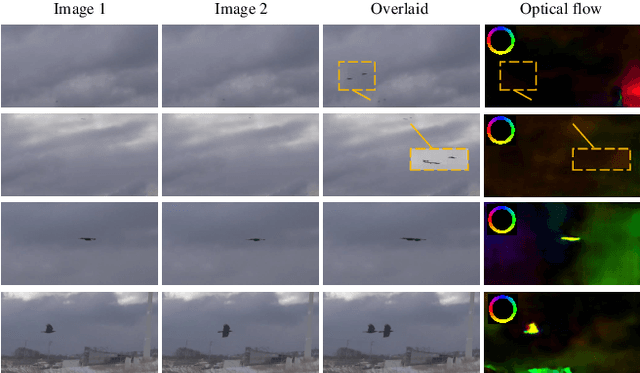
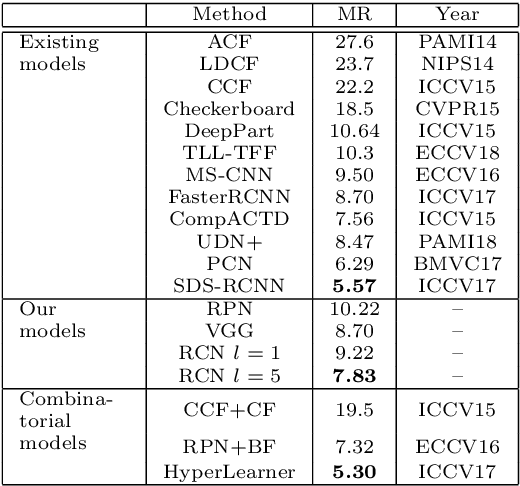
Abstract:Detecting tiny objects in a high-resolution video is challenging because the visual information is little and unreliable. Specifically, the challenge includes very low resolution of the objects, MPEG artifacts due to compression and a large searching area with many hard negatives. Tracking is equally difficult because of the unreliable appearance, and the unreliable motion estimation. Luckily, we found that by combining this two challenging tasks together, there will be mutual benefits. Following the idea, in this paper, we present a neural network model called the Recurrent Correlational Network, where detection and tracking are jointly performed over a multi-frame representation learned through a single, trainable, and end-to-end network. The framework exploits a convolutional long short-term memory network for learning informative appearance changes for detection, while the learned representation is shared in tracking for enhancing its performance. In experiments with datasets containing images of scenes with small flying objects, such as birds and unmanned aerial vehicles, the proposed method yielded consistent improvements in detection performance over deep single-frame detectors and existing motion-based detectors. Furthermore, our network performs as well as state-of-the-art generic object trackers when it was evaluated as a tracker on a bird image dataset.
Classification-Reconstruction Learning for Open-Set Recognition
Dec 17, 2018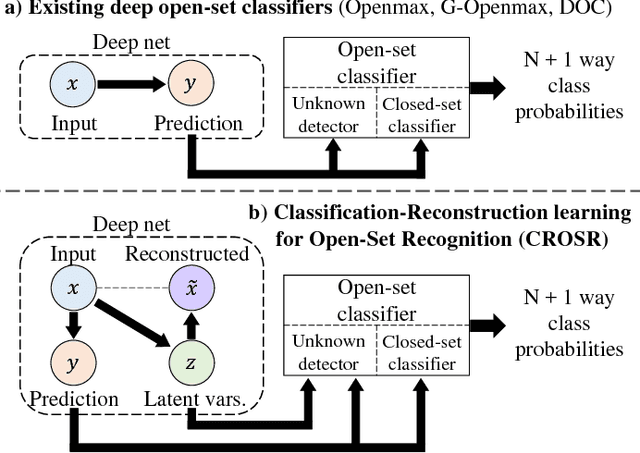



Abstract:Open-set classification is a problem of handling `unknown' classes that are not contained in the training dataset, whereas traditional classifiers assume that only known classes appear in the test environment. Existing open-set classifiers rely on deep networks trained in a supervised manner on known classes in the training set; this causes specialization of learned representations to known classes and makes it hard to distinguish unknowns from knowns. In contrast, we train networks for joint classification and reconstruction of input data. This enhances the learned representation so as to preserve information useful for separating unknowns from knowns, as well as to discriminate classes of knowns. Our novel Classification-Reconstruction learning for Open-Set Recognition (CROSR) utilizes latent representations for reconstruction and enables robust unknown detection without harming the known-class classification accuracy. Extensive experiments reveal that the proposed method outperforms existing deep open-set classifiers in multiple standard datasets and is robust to diverse outliers.
Differentiating Objects by Motion: Joint Detection and Tracking of Small Flying Objects
May 15, 2018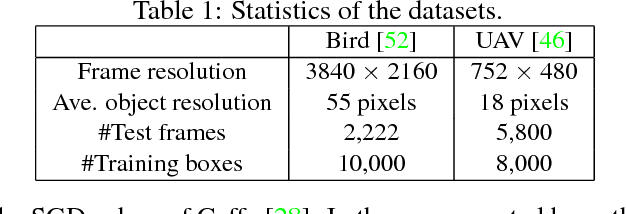

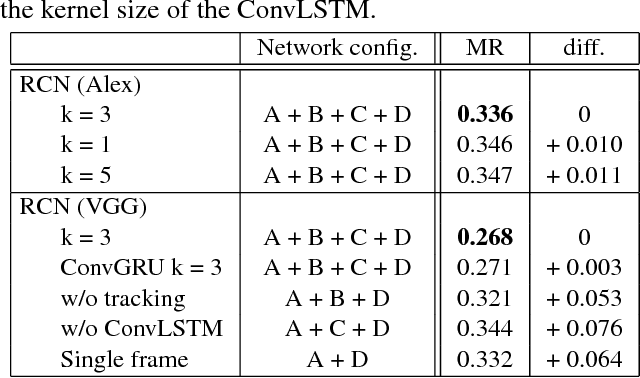
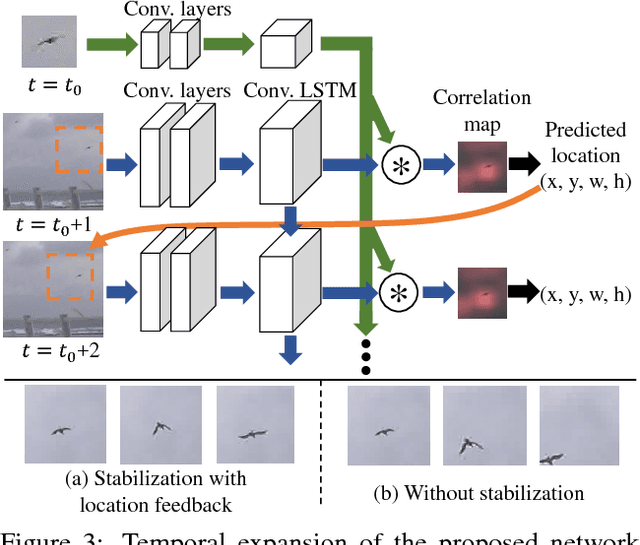
Abstract:While generic object detection has achieved large improvements with rich feature hierarchies from deep nets, detecting small objects with poor visual cues remains challenging. Motion cues from multiple frames may be more informative for detecting such hard-to-distinguish objects in each frame. However, how to encode discriminative motion patterns, such as deformations and pose changes that characterize objects, has remained an open question. To learn them and thereby realize small object detection, we present a neural model called the Recurrent Correlational Network, where detection and tracking are jointly performed over a multi-frame representation learned through a single, trainable, and end-to-end network. A convolutional long short-term memory network is utilized for learning informative appearance change for detection, while learned representation is shared in tracking for enhancing its performance. In experiments with datasets containing images of scenes with small flying objects, such as birds and unmanned aerial vehicles, the proposed method yielded consistent improvements in detection performance over deep single-frame detectors and existing motion-based detectors. Furthermore, our network performs as well as state-of-the-art generic object trackers when it was evaluated as a tracker on the bird dataset.
Cross-connected Networks for Multi-task Learning of Detection and Segmentation
May 15, 2018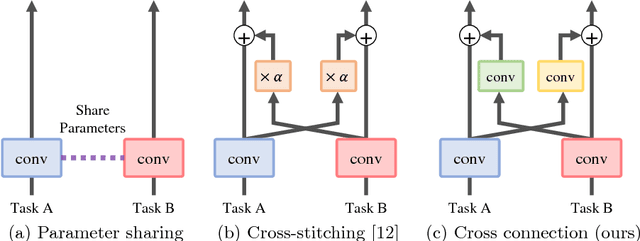
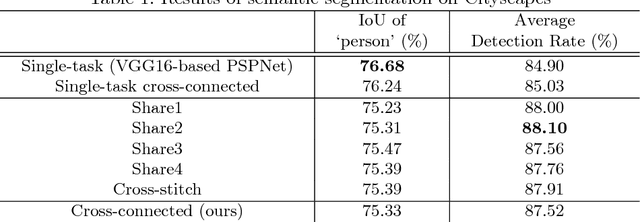
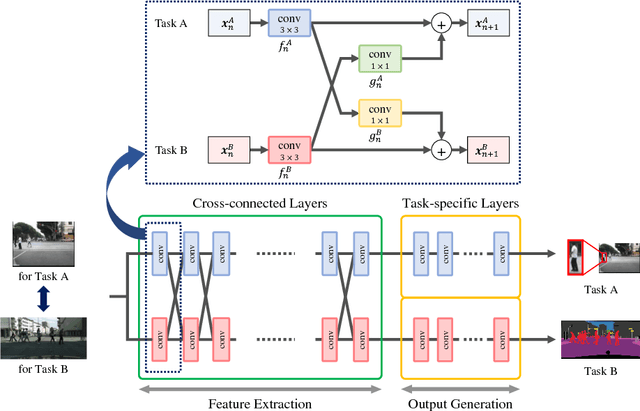
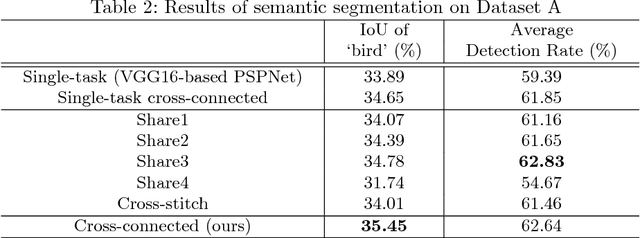
Abstract:Multi-task learning improves generalization performance by sharing knowledge among related tasks. Existing models are for task combinations annotated on the same dataset, while there are cases where multiple datasets are available for each task. How to utilize knowledge of successful single-task CNNs that are trained on each dataset has been explored less than multi-task learning with a single dataset. We propose a cross-connected CNN, a new architecture that connects single-task CNNs through convolutional layers, which transfer useful information for the counterpart. We evaluated our proposed architecture on a combination of detection and segmentation using two datasets. Experiments on pedestrians show our CNN achieved a higher detection performance compared to baseline CNNs, while maintaining high quality for segmentation. It is the first known attempt to tackle multi-task learning with different training datasets between detection and segmentation. Experiments with wild birds demonstrate how our CNN learns general representations from limited datasets.
 Add to Chrome
Add to Chrome Add to Firefox
Add to Firefox Add to Edge
Add to Edge